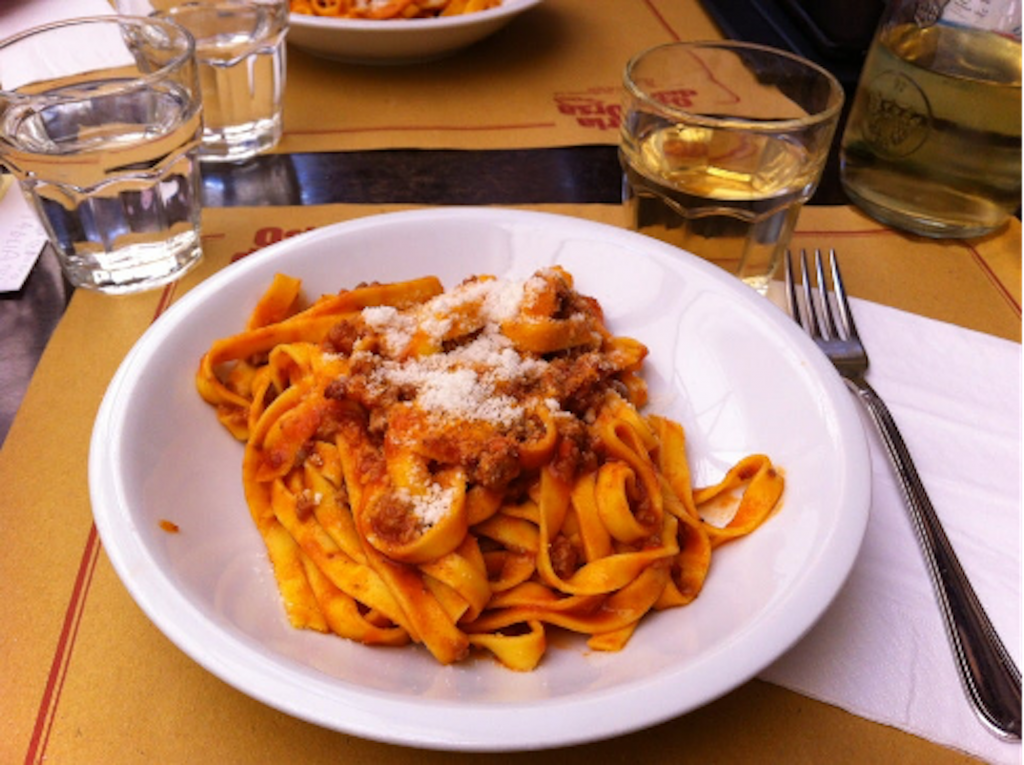Ever since I moved to Germany in 2018, I continue to discover something new about the German culture and food traditions every day. And one cannot resist the typical German dishes and desserts. Early on I realised that most Germans really love Italian food – how not to love it – but a question immediately came to my mind: are they really eating Italian food??? In the past 2 years, I have discovered so many bad “Italian food habits” that I´m sure it causes a heart attack to every mom and grandma in Italy. As a researcher, our working time sometimes prevents us from taking care of our diet, pushing us towards fast food just to satisfy our appetite. These attitudes are common for each researcher but there are some limits that Italians cannot cross.
Food as a milestone in Italy
In the last two decades, time became the most precious variable that is lacking in the life of most people. Despite this, Italians can still manage to take some time from the hectic daily routine in order to cook a hot meal every day. Why? This is because in Italy cooking is a moment of pleasure and sometimes fun and getting together. Food is a condensation of social, environmental, historical and cultural values and plays a fundamental role in individual and collective relationships, family dynamics and connections with the different regions. Regarding the last point I have to say that there are big differences in food tradition between North and South of Italy (considering Rome as a crossover point!). Although the North is known for its use of meats and cream sauce, the South is taking advantage of its warm climate and sea, is the origin of pizza and pasta, which are still very popular with the Southerners. Due to the South’s proximity to the Mediterranean Sea, it has dramatically influenced the ingredients that are popular in that area – such as olive oil, fish, pasta, vegetables and minimal meat. With globalization, most Italian dishes have become very trendy in the last half of a century. For example, all over the world, Neapolitan pizza is the image of round crust pizza filled with tomato sauce, mozzarella and basil leaves in the centre! After the Second World War a lot of Italian, mainly from the South of Italy migrated to Germany in order to work in German Industries. Young men, eventually followed by their entire household, built their lives in various industrialized German cities, like Cologne, Munich or Frankfurt. With them they brought not only a cultural background but also a millenary culinary that quickly spread throughout the German nation.
Is that really Italian? – Jein!
Now it´s time to guide you into a journey through the Italian- German “food degradation”. It all started when I was invited for the first time to a party, and as expected, they asked me to prepare an Italian dish, Tiramisu.

Tiramisu is a coffee-flavoured Italian dessert and it is made of savoiardi (Italian cookies) dipped in coffee, layered with a whipped mixture of eggs, sugar, and mascarpone cheese and an alcoholic touch given by an Italian liqueur called Marsala. Its origins are often disputed among the Italian regions Piemonte, Veneto and Friuli Venezia Giulia. The name is literally translated as “pick me up” or “cheer me up” and the story behind it is a bit hilarious. It was believed that Tiramisu had aphrodisiac properties and people were so convinced about its properties that it was common to eat some Tiramisu before having a love meeting! In short, it was considered a sort of “natural Viagra.” Now coming back to the party I was invited to: I prepared everything as described in the original recipe, but no one completely appreciated it, because……it missed Amaretto. This was one of the first horrifying moments that I went through in the last 2 years. This liquor is never and should never be included in the original Tiramisu recipe!
Tiramisu was just the beginning… let me talk about Bolognese! This is a meat-based sauce in Italian cuisine, typical of the Emilia´s tradition (Italian region where Bologna is located). It is customarily used to prepare “tagliatelle al ragù” and to prepare “lasagne alla Bolognese”. Fortunately, most of the people in Germany know how to prepare the Bolognese sauce, unfortunately they don´t know how to dress and which pasta to use. The most common kind of pasta used in Germany for this sauce is spaghetti which is quite far away from the homemade tagliatelle, a typical Italian tradition. Furthermore, in Germany people sauce the pasta directly in the serving plates instead of in the pot immediately after removing the cooking water. I would say this is strange for us but still acceptable.

Is that really Italian? No that is NOT Italian, trust me!
Let me finish this blog with 2 “typical Italian dishes” that I discovered in the last 2 years: Fettuccine Alfredo and “Spaghettieis”. The famous “Fettuccine Alfredo” was in fact discovered in Rome by Alfredo Di Lelio in 1908 in the trattoria Piazza Rosa but they are practically unknown in Italy (or at least outside of Rome). This common and poor dish made with pasta, butter and parmesan, which in fact was not a novelty and was not linked to any particular territory, it was consecrated overseas. Since then, Fettuccine Alfredo is one of the most popular pasta dishes in the United States and has been a true symbol of Italian cuisine for several generations of Americans and Germans too.
Regarding the Italian dessert “Spaghettieis”, it was the invention of Dario Fontanella, in Mannheim in 1969, which eventually made the small family-owned business to have a national relevance. He re-created the filiform shape of the typical Italian pasta with vanilla flavoured ice cream thanks to the aid of the spätzle machine. To imitate the tomato puree, pureed strawberries were used instead. Finally, Parmesan is nothing more than grated white chocolate. Dario Fontanella with his spaghetti-shaped ice cream has made adults and children crazy ever since.
Conclusion
With this journey, I hope I’d give you some tips regarding the “germanized Italian food” commonly eaten in Germany and how to avoid it and try to stick with the local dishes of the German tradition instead. Once the pandemic will be over, I hope that it will be possible again to fly to Italy and have a real journey through the “Italian food tradition”. In particular, I would recommend to not skip a visit to Bologna, a fascinating middle-age city, famous for the oldest university in the world, where you could try the real “Bolognese”. For the tiramisu it´s much simpler, it is delicious anywhere in Italy!
Author: Alessio DeMagis
